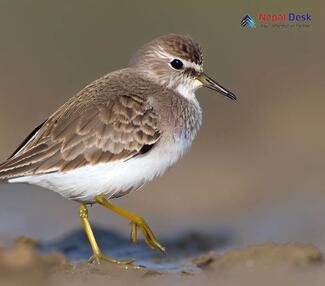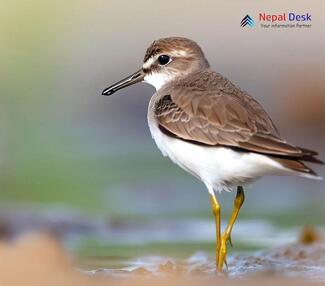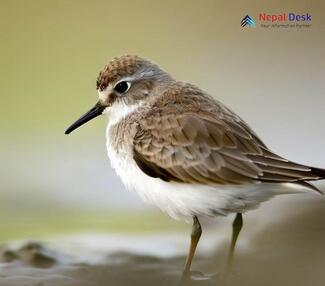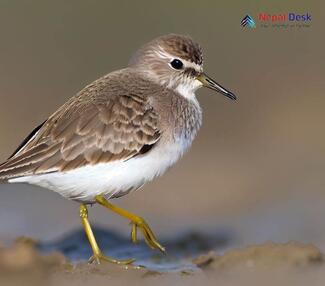Temminck's Stint (Calidris temminckii) is a small, remarkable wader bird species that has captured the attention of bird enthusiasts worldwide. Its presence in Nepal offers a fantastic opportunity to get up close and personal with this unique species. In this article, we'll delve into the fascinating world of Temminck's Stint, exploring its characteristics, habitat preferences, and storied presence in Nepal.
Introducing the Temminck's Stint
The Temminck's Stint (Calidris temminckii) belongs to the Scolopacidae family and is a small migratory wading bird. This petite avian wonder measures around 13-15 cm in length and weighs approximately 20-35 grams. The summer plumage of these attractive little birds features shades of brown on their upper body, with a subtle yet noticeable chestnut hue on their scapular feathers. In contrast, their winter plumage is predominantly greyish-brown.
Habitat and distribution
Temminck’s Stints breed in the Arctic regions across Europe and Asia, specifically in countries like Finland, Russia, and Norway. They prefer wet habitats like tundra pools, wet meadows, marshes, and peatlands during the breeding season. After breeding, they embark on migration journeys towards Africa and South Asia. The preferred habitat for these birds during migratory stopovers and winter includes shallow freshwater lakeshores, fish ponds, wet grasslands, and rice fields.
Presence in Nepal: A birdwatcher's delight
Nepal has established itself as a true haven for bird enthusiasts. Given its diverse range of habitats and altitudes, it offers a thriving ecosystem for an impressive variety of avian species – the Temminck's Stint being one of them.
Though not breeding in Nepal, the country serves as an important migratory stopover and wintering site for Temminck's Stint during the non-breeding season. Birdwatchers are frequently rewarded with sightings in areas like Chitwan National Park, Bardia National Park, and Koshi Tappu Wildlife Reserve from mid-October until early April. These beautiful birds can be more easily seen foraging in the shallows of wetlands, expertly skimming off small insects from the water's surface.
Conservation efforts and the role of local communities
In order to support the continued presence of the Temminck's Stint in Nepal, it is critical that conservation efforts are undertaken to protect their preferred habitats. Local communities play a crucial role in these initiatives through sustainable tourism practices and raising awareness about the significance of preserving natural ecosystems.
With its unique migratory patterns and striking plumage, Temminck's Stint truly is a fascinating sight to behold. Birdwatchers visiting Nepal should undoubtedly make it a priority to seek out this incredible species and revel in its captivating presence.




